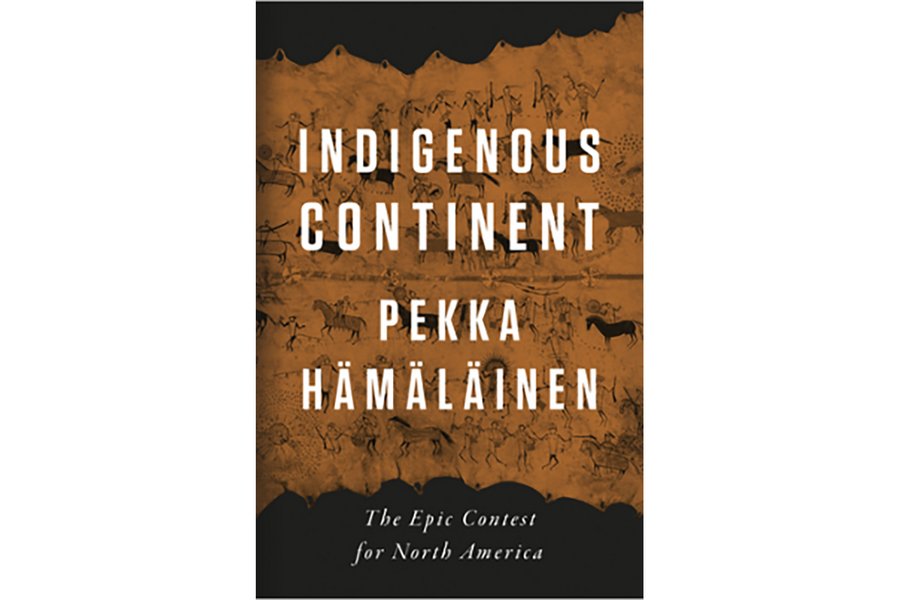How Native Americans’ resistance shaped the United States
Loading...
Pekka Hämäläinen begins his provocative history of the conquest of North America by describing a thriving group of hunter-gatherers who inhabited wide swaths of the land as far back as 10,000 B.C. It’s a fitting introduction to “Indigenous Continent: The Epic Contest for North America,” which centers the narrative on Native peoples rather than on European colonizers. While Native Americans have often been seen as tragic victims of history, Hämäläinen presents them instead as significant actors whose resistance and resilience fundamentally shaped the eventual development of the United States.
“Indigenous Continent” is a corrective to the version of American history taught in most schools. In the traditional telling, with its suggestion of manifest destiny, the encounters between Colonial settlers and the original inhabitants lead inexorably and inevitably to the vanquishing of Native Americans. In reframing the story, reorienting it to the Native perspective, Hämäläinen, an American history professor at Oxford University, presents not a Colonial America, but an Indigenous America. “The history of the overwhelming and persisting Indigenous power recounted here remains largely unknown,” he writes, “and it is the biggest blind spot in common understandings of the American past.”
Hämäläinen emphasizes the extent to which Native Americans dominated huge sections of North America, even into the 19th century. European powers might have claimed the continent, the author observes, but Indigenous peoples in fact controlled it. “Time and again, and across centuries, Indians blocked and destroyed colonial projects, forcing Euro-Americans to accept Native ways, Native sovereignty, and Native dominance,” he writes. Hämäläinen, who has written previous books on the Lakota and the Comanche nations, cites, among other examples, Iroquois expansion and dominance in the 17th century and the Comanches’ command over the Southwest, which lasted into the 19th.
In addition to maintaining control over much of the continent in the face of Colonial expansion, Native peoples, according to Hämäläinen, directly influenced the prospects of the different Colonial powers. Referring to the Iroquois Confederacy, also known as the Five Nations, he writes, “The Five Nations League profoundly shaped American history by bolstering certain colonial projects – New Netherland, New York, and the other middle colonies – while thwarting others, most notably New France, whose commercial and territorial ambitions in the interior were severely reduced by Iroquois power.” As a result of King Philip’s War in New England and the 1680 Pueblo Revolt against the Spanish in New Mexico, Native Americans, in Hämäläinen’s words, “rolled colonialism back in different corners of the continent.”
The author repeats that message throughout his account, demonstrating that Native Americans impeded first the land-hungry colonists, and then their descendants, well into the 19th century. It’s a brutal and violent history: In addition to warfare, diseases – primarily smallpox – decimated Indigenous populations. Meanwhile, the American population grew rapidly, expanding ever westward to the Pacific.
In time, the United States relied more on law and treaties than on warfare in dispossessing Native Americans of their land. By the late 19th century, Hämäläinen points out, “Indigenous nations could no longer win wars against the American leviathan.”
There is much more of note in this rich, substantial book. (For instance, Hämäläinen is particularly attentive to the profound impact of the horse, brought by the Spanish to the New World, on the power dynamics between Native Americans and Europeans.) Its detailed emphasis on the Indigenous perspective is welcome and occasionally revelatory.
At times, however, the analysis falls short. Hämäläinen makes repeated references to the Colonial powers and, later, the Americans being afraid of and humiliated by Native Americans. After noting that nearly 100,000 Indigenous people were forcibly removed to reservations west of the Mississippi, the author calls the reservations “a sign of American weakness, not strength.” Similarly, he writes of the 1890 killing of nearly 300 Lakota men, women, and children by the U.S. Army that “the apocalyptic Wounded Knee Massacre was a sign of American weakness and fear.” These characterizations fit his thesis but feel inadequate in the face of the American government’s power to carry out such destructive and calamitous policies.
“Indigenous Continent” ends around the time of Wounded Knee. Hämäläinen briefly addresses the present day, noting that “today, many Native nations and communities are rapidly growing in numbers. The continent is speckled with hundreds of Native nations that preserve Indigenous sovereignty and nationhood.”
The Native American experience, of course, continues to evolve. Hämäläinen concludes by predicting that, as in the past, resistance and resilience will feature prominently in the future.






